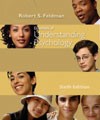 |
1 |  | 
______________ is the manipulation of mental representations of information. |
|  | A) | Insight |
|  | B) | Thinking |
|  | C) | Language |
|  | D) | Use of algorithms |
 |
 |
2 |  | 
Wolfgang Kohler's classic experiment, where he exposed chimps to challenging situations, is an impressive display of |
|  | A) | mental set. |
|  | B) | syllogistic reasoning. |
|  | C) | insight. |
|  | D) | algorithms. |
 |
 |
3 |  | 
A ______________ psychologist would study thinking, language, memory, reasoning, and decision-making. |
|  | A) | health |
|  | B) | school |
|  | C) | developmental |
|  | D) | cognitive |
 |
 |
4 |  | 
What other words can be made from the letters in "PSYCHOLOGICAL"? This is a type of |
|  | A) | arrangement problem. |
|  | B) | transformation problem. |
|  | C) | problem of inducing structure. |
|  | D) | means-end analysis. |
 |
 |
5 |  | 
Thinking of a fork as an eating utensil and not as a "back scratcher" is an example of |
|  | A) | convergent thinking. |
|  | B) | syllogistic thinking. |
|  | C) | functional fixedness. |
|  | D) | creativity. |
 |
 |
6 |  | 
Confirmation bias occurs when |
|  | A) | initial hypotheses are ignored. |
|  | B) | initial hypotheses are favored over information supporting alternative solutions. |
|  | C) | alternative solutions confirm initial hypotheses. |
|  | D) | alternative solutions are accepted without confirmation. |
 |
 |
7 |  | 
Phonemes are |
|  | A) | arranged according to systematic rules. |
|  | B) | the rules governing the meaning of words. |
|  | C) | mental images. |
|  | D) | the smallest basic sound units that affect the meaning of speech. |
 |
 |
8 |  | 
Jesse stated, "I dranked all my milk." This is an example of |
|  | A) | telegraphic speech. |
|  | B) | babbling. |
|  | C) | overgeneralization. |
|  | D) | prototypical speech. |
 |
 |
9 |  | 
You are asked the question, "How many windows are there in your parent's house"? To answer, you visualize the building and take a mental walk around it counting the windows. In achieving the answer you use a(n) |
|  | A) | imaginary delusion. |
|  | B) | precursor to perception. |
|  | C) | mental image. |
|  | D) | visual nondistractor. |
 |
 |
10 |  | 
In problems of inducing structure, the goal is to |
|  | A) | In problems of inducing structure, the goal is to |
|  | B) | generate new elements in order to induce a new structure. |
|  | C) | identify and extend relationships that exist among the elements. |
|  | D) | impress others with your problem-solving skills. |
 |
 |
11 |  | 
Which of the following theories espouse the idea that language acquisition follows the principles of reinforcement and conditioning? |
|  | A) | learning-theory approach |
|  | B) | linguistic-relativity hypothesis |
|  | C) | language-acquisition device |
|  | D) | universal grammar |
 |
 |
12 |  | 
Do animals use true language? |
|  | A) | No. |
|  | B) | Yes. |
|  | C) | It has not been researched. |
|  | D) | It has not been demonstrated conclusively. |
 |
 |
13 |  | 
If expulsions from college were widely publicized in the college media, then ______________ would suggest that students would judge them to happen more often than they really do. |
|  | A) | syllogistic reasoning |
|  | B) | insight |
|  | C) | the availability heuristic |
|  | D) | functional fixedness |
 |
 |
14 |  | 
Thinking about an object only in terms of its most typical use is called |
|  | A) | mental set. |
|  | B) | functional fixedness. |
|  | C) | confirmation bias. |
|  | D) | the availability heuristic. |
 |
 |
15 |  | 
It was once claimed that arctic Eskimos thought deeply about snow because their language offers a rich vocabulary to describe it. If this were true, it would ______________ the linguistic-relativity hypothesis. |
|  | A) | support |
|  | B) | suggest a different theory than |
|  | C) | be neutral towards |
|  | D) | disconfirm |
 |



 2002 McGraw-Hill Higher Education
2002 McGraw-Hill Higher Education

 2002 McGraw-Hill Higher Education
2002 McGraw-Hill Higher Education